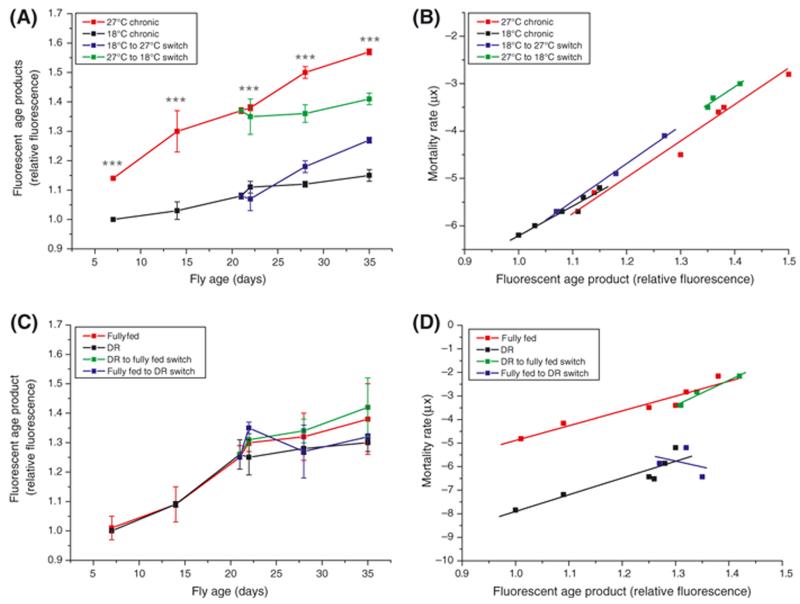Figure 2. Fluorescent AGE accumulation reflects temperature-dependent mortality but is independent of diet.
A: Fluorescent AGE products accumulated with chronological age in flies housed at different temperatures (20 flies per sample, n = 3 samples for each condition). At all time points flies chronically housed at 27°C had higher AGE levels than those at 18°C. Switching flies to 18°C induced an immediate slowing in AGE accumulation to a rate indistinguishable from flies chronically maintained at 18°C but AGE accrual was irreversible in the time scale of this experiment. The reverse switch (18°C to 27°C) induced an immediate rise in AGE accumulation rate to that of flies kept chronically at 27°C but total AGE content never reached that of flies chronically maintained at 27°C. ***, P < 0.001.
B: There was no significant difference in either slope or intercept in regression lines fitted to plots of μx (Figure 1B) against AGE content (from panel C) for either chronic or switched cohorts. The data is best described by a single mathematical relationship.
C: Fluorescent AGE products accumulated with chronological age in fully-fed and DR flies, and in flies where diet was switched, but there was no difference in AGE levels between treatments (20 flies per sample, n = 3 samples for each condition).
D: Plotting mortality rate (μx, Figure 1A) against AGE content (from panel A) revealed that there was a significantly lower (P<0.0001) intercept in the regression line fitted to the DR group as compared with that of the control group indicating that the accumulation of AGEs in DR was delayed as compared with control flies. Once begun, the rate of AGE accumulation in the two groups was identical. Flies switched between DR and fully fed regimes adopted the mortality rate/AGE content relationship of the fully fed controls.

